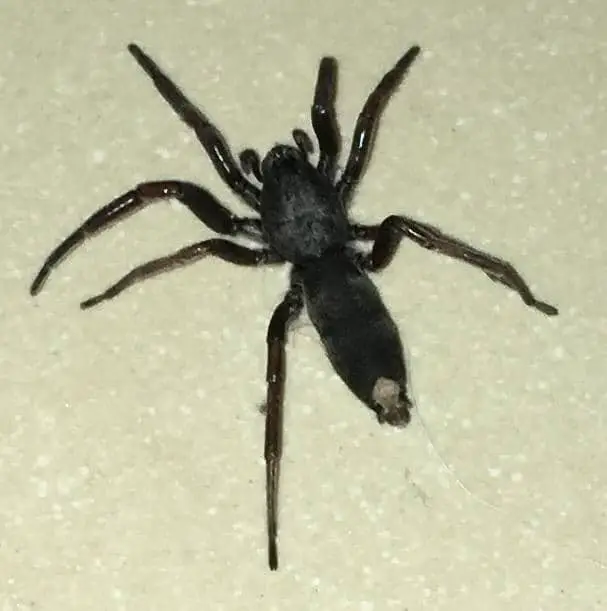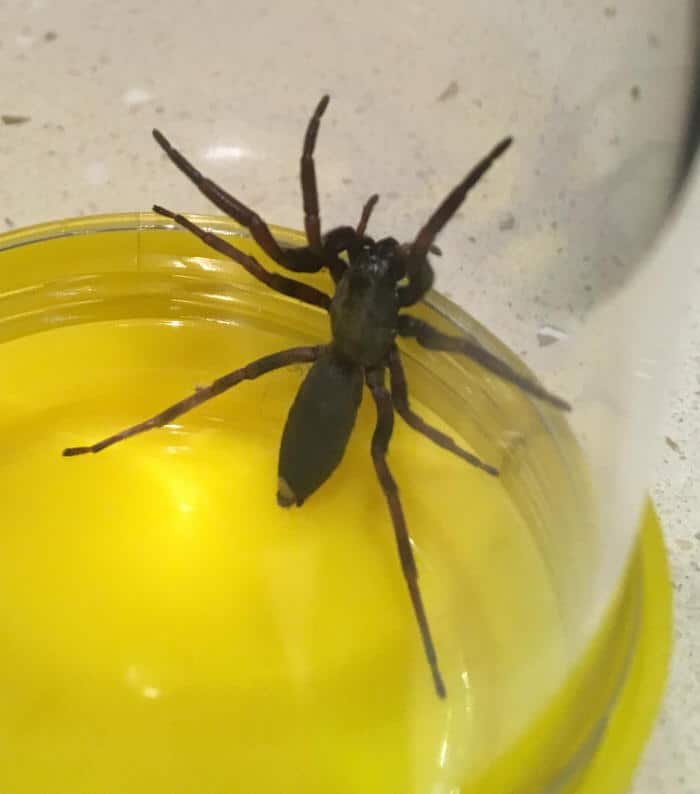The White Tailed Spider (Lampona cylindrata) is about the size of a 50c piece when fully grown, with a leg diameter about the size of a pin.
It has a grey cigar-shaped abdomen with a white spot on the end and sometimes the legs are banded with light traverse marks on the abdomen. These markings are more predominant on the juvenile White Tailed spider. It is typically found in cool, dark areas – under bark, in gardens, litter, walls and beds.
It is active at night time and often enters buildings where it can be seen walking across floors and up walls. It is commonly found in the bedroom and during daylight hours, the spider seeks a dark place to hide. Indoors, this may be in clothing that has been left lying about and bites may occur when this clothing is put on.
It is most prevalent in Spring – Autumn and there are many species in Australia and New Zealand. The White Tailed Spider does not usually build a web, preferring to rove around. It prefers to nip and run when cornered but can bite repeatedly. Bites by this spider are relatively frequent due to its wandering habit.
The bite symptoms vary from no reaction to local pain, swelling, redness and small local ulcers that usually clear up in a few days although more serious reactions have been claimed.
White Tailed Spider venom comes up non-necrotic. Although it has been suggested as a culprit in rare cases of large scale necrotic lesions, there is little supporting evidence.
Click here for more photos of White Tailed Spiders.


Information and pictures were taken from children’s projects and where credited to that child does not claim to be original information. Where possible, permission to reproduce has been sought. Any infringement of copyright is purely unintentional.
